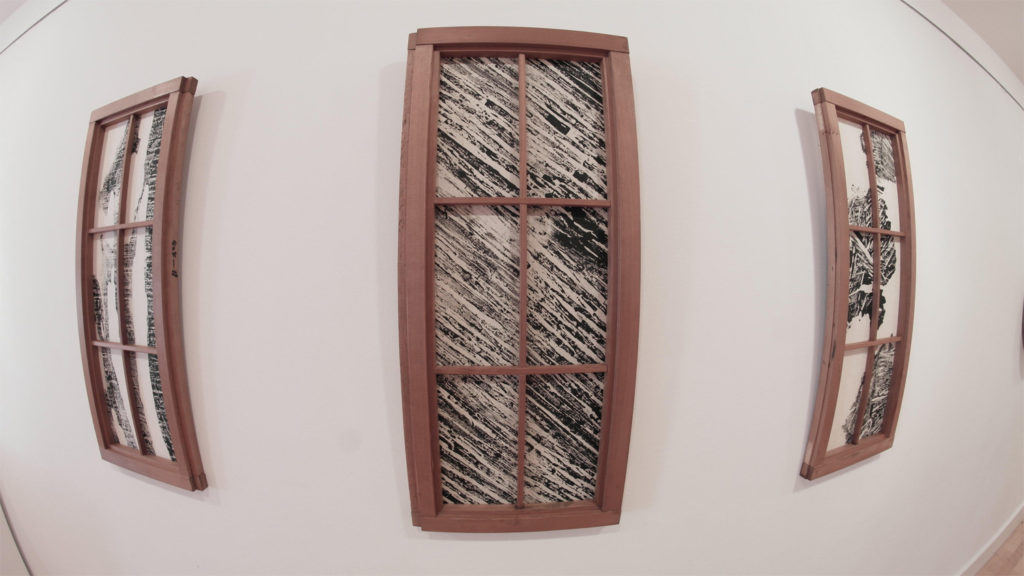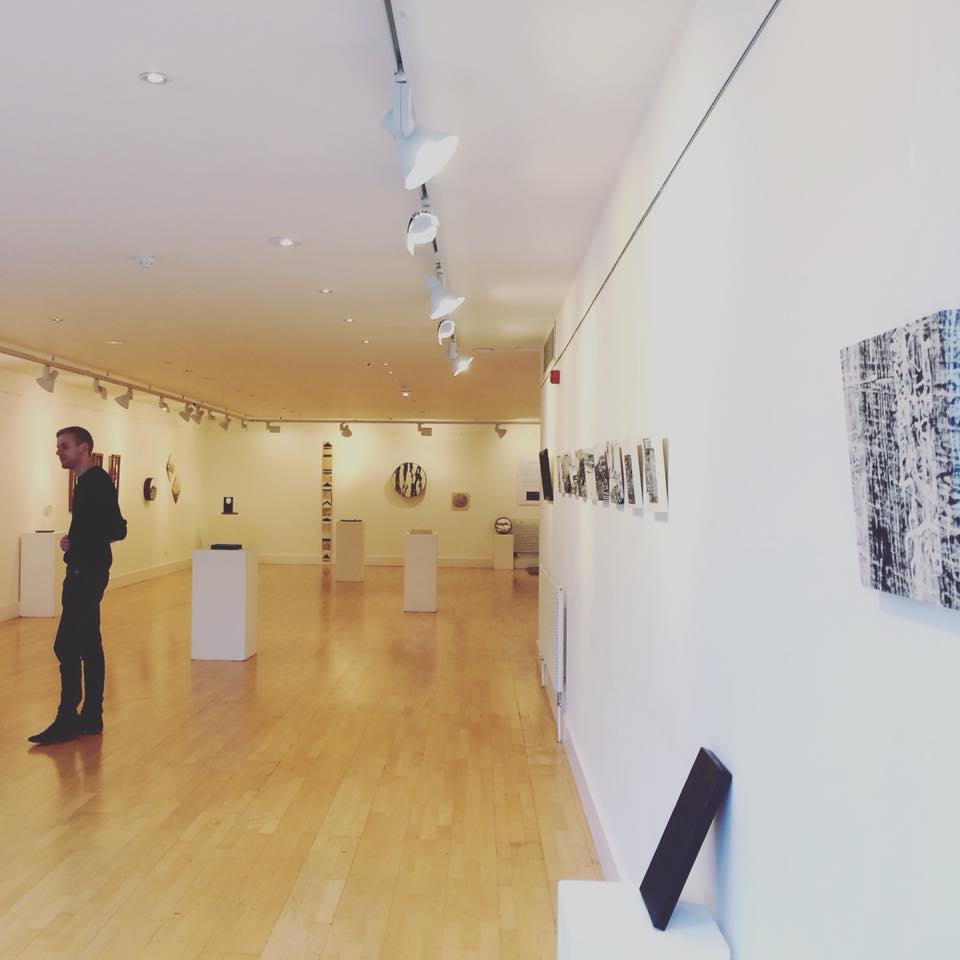With a focus on time and perception, London-based artists Iyamari’s UK debut exhibition ‘Stay-’ aims to construct a model of ‘a moment’ and human cognisance, which she presents effectively through her use of installation artwork.
Iyamari combines wood prints, which reflects the idea of trees functioning as a medium for preserving records of time, with thought-provoking video artwork from the collaborative initiative, ‘Telescore Project.’
Having been invited to a private viewing of ‘Stay-,’ and presented with the chance to meet Iyamari, the Japan Nakama team embraced the opportunity to find out a little more about both the artist and the exhibition. Please note that some of Iyamari’s responses have been summarised for the purpose of this article.
“I have two family lines, both rooted in traditional handiworks and Japanese culture. I feel I am a representation of both sides.”



Q: Please tell our Nakama readers who you are, as a person, an artist and a craftswoman. What do you represent?
I would describe myself first as Japanese. I am also an artist. I grew up in my father’s art studio, with a family background rooted in making things.
My background was quite unique in that my mother went out to work and my father stayed at home looking after me and working in his studio, so being part of an art environment was part of my daily life.
On my father’s side, my grandparent’s background is in making traditional handcrafts and chests; I use aspects of this skill in my artwork now. On my mother’s side, there is also a history of traditional work. They were tailors, so I have seen a lot of kimono rolls and books about family symbols, how to wear kimonos and how to care for them.
I have two family lines, both rooted in traditional handiworks and Japanese culture. I feel I am a representation of both sides.
With my father being an oil painter, which is not traditional, I thought it important to learn to paint traditionally (nihonga).
Q: Please give me a quick summary of STAY? How did this name come about?
When thinking about a title, I wanted something related to time and my personal situation. I also wanted to say something short, with a lot of meaning.
‘Stay’ has a lot of different meaning for me, but I also want to ask the question: what does the word ‘stay’ mean for you?
For me, someone living in London, the word ‘stay’ is linked to time and space. It’s similar to ‘visit’ and ‘live,’ in its link to the amount of time spent somewhere.
A ‘stay’ includes the feeling of going somewhere and not knowing the length of time, but also knowing that you will move. In this sense, it reflects my current situation and that of many other people living in London.

Q: Do you have a favourite piece?
I love most of my pieces because they each generated such an interesting feeling after creation. Each piece tells me something new. I feel like a mother who made them and now they stand alone.
At the moment, the tree stump print with the musical score of the Butoh dance is probably my favourite. This effect was achieved through the use of grey scale. Each groove represents a note, played according to whichever light or dark point comes up.
Q: Trees and nature are very important in Japanese culture, how has this influenced your angle?
Wood and stones are basic materials linked to basic human life and a desire to create something.
In Japanese, the philosophical word ‘Komorebi’ means light filtering through tree leaves. In this sense, for Japanese people, light is both important and linked to beauty. There are also links to the word ‘Shinrinyuko,’ which means forest bathing; to walk through or sit in a forest to absorb its calming, health rejuvenating properties. In recent Japanese culture, there has been a move towards health and reconnecting with nature.
If you’re interested in Iyamari’s work, or philosophy on life, find out more by checking out her website iyamari.info






































